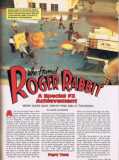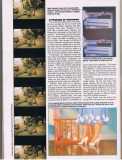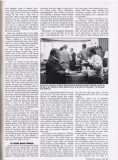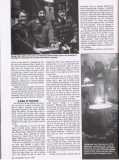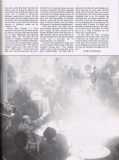At the Ink and Paint Club in Who Framed Roger Rabbit, Toons serve human customers. And that very simple order of the day created nightmares for the filmmakers. "There were those penguins walking around the bar," says mechanical FX supervisor George Gibbs, "carrying real trays and serving real drinks. All the sets were built six feet off the ground with slots for the mechanical rigging. The puppeteers underneath the sets had headphones so they could hear the director, and they had a TV monitor so they could see what was happening above them. They walked up and down underneath the set stopping at various tables so people could pick up their drinks off the trays. And then we had other systems with trays on trolleys so that if the director decided he wanted a tray going in a certain path, we wouldn't have to cut a slot in the set, we could just pull the trolley on a track along the floor."
Animator Alvaro Gaivoto, who had freelanced for Richard Williams previously, picks up the story. "The penguins in the Ink and Paint Club were all over the place," explains Gaivoto. "Or actually, their trays were. Many of the sets were built on platforms six feet above the stage floor, but it was particularly amazing to see the Ink and Paint Club set, which was actually on the second half level of the soundstage in London. You would see all these trays floating around on rods. Of course, the reason for all these cables and wheels was that we had to go way beyond what had been done with Mary Poppins. And the key was interaction. The cartoon characters had to interact with the live action environment. And it wasn't just a matter of following a smoothly moving tray, which some puppeteer was manipulating from below the set, you had to follow every little tilt and wiggle. Or rather, you had to anticipate every little tilt and wiggle with character business that made sense and looked natural. Even when the trays stopped at a table, they were never still, there was always a little jostling back and forth. The trick was to create a character that made all that movement seem logical and still turn in a performance. It really forced you out of the mold of old habits and made you reach beyond what you had done in the past."
[…]
